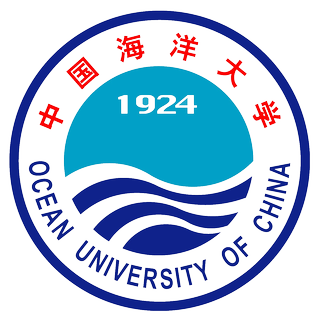ENSO Conceptual Model Working Group
Motivation
The recharge oscillator (RO) has become one of the most popular ENSO conceptual models over the last decade. It provides a mechanistic hypothesis for the role of the ocean state in ENSO cycle and predictability. It shapes how we think about ENSO mechanisms, and is often used as a guide to interpret the shortcomings of climate models. On the other hand, other ENSO conceptual models that are also based on observed physical properties can also explain the ENSO oscillatory features. For example, the delayed oscillator, the western Pacific oscillator and the advective-reflective oscillator emphasize different physics of ENSO, and are all special cases of the unified oscillator. Yet, to date, it is not clear that the RO is a better conceptual model of ENSO than the delayed, western Pacific or advective-reflective oscillators. Additionally the RO is available in different versions (e.g., including state-dependent stochastic forcing, dynamical nonlinearities), which capture additional observed ENSO properties. Such variations of the RO paradigm are well-known by theorists, but less known by the wider community working on ENSO. Last but not least, some important properties of ENSO (e.g., temporal irregularity, pattern diversity, asymmetries, periodicity change) are currently not accounted for by the standard formulation of the RO. The objective of this working group is to bring experts of ENSO theory, modelling, and observations together to review knowledge on ENSO conceptual models and identify possible avenues for improved conceptual models that can more fully account for ENSO complexity. One of the deliverables of this working group will be a review paper that synthesizes the current state of knowledge on this topic, emphasize commonalities and differences between different conceptual models and highlights their pros and cons. Conference sessions will be organized to disseminate the outcomes of the working group activities to the broader ENSO community. This working group will closely interact with the ENSO metrics activities being carried out within the PRP. Dynamical metrics for climate models, derived or informed by conceptual models, will be another important deliverable of the working group. Finally, a new, consolidated conceptual framework that accounts for more key ENSO properties than possible with the current conceptual models, may be developed in the context of this working group.
Terms of reference
- To agree on a common definition for an “ENSO conceptual model”, e.g., “A set of relatively simple ordinary differential equations, underpinned by observed physical principles, that can be integrated for extended periods on a personal computer, and reproduces fundamental ENSO properties in observations and climate models; along with a theoretical analysis of those equations.” (this is just meant as an example, the working group will have to set the boundaries of what we call a conceptual model: we probably don’t want to include intermediate models such as Cane-Zebiak, but what about the LIM framework?)
- To agree on ENSO fundamental properties (e.g., frequency, phase locking, predictive properties of oceanic heat content, asymmetry, pattern diversity…) that should be accounted for by an ENSO conceptual model , and to define quantitative measures of these properties (for instance based on the work of the ENSO metrics WG)
- To review the existing literature for physical mechanisms or phenomena that appear to play a key role in ENSO and should somewhat be encapsulated (if possible explicitly) in conceptual models of ENSO, trying to relate these physical mechanisms with some of ENSO properties (e.g., multiplicative noise and ENSO irregularity and asymmetry, Bjerknes feedback and ENSO growth, recharge/wave reflection and ENSO period, strong thermocline feedback in the eastern and advective feedback in the central Pacific and ENSO diversity, etc…)
- To review the existing literature for a list of existing ENSO conceptual model families, their core hypotheses and physics, the essential mechanisms that they encapsulate, heuristic mathematical terms and their representative physical meanings.
- To define diagnostics and metrics, for instance those developed in the context of the ENSO metrics WG, that allow to gauge the capacity of existing conceptual models to reproduce key ENSO properties and mechanisms in observations and the last CMIP exercise. To summarize the key properties of ENSO and sensitivities to the background state that are currently well explained by conceptual models, and under which hypotheses;
- To summarize the key properties of ENSO and sensitivities to the background state that are currently not well (or not at all) explained by conceptual models, and propose a way forward (e.g., include two distinct east and central Pacific surface temperature variables in the RO to represent ENSO diversity, etc…)
- If possible, develop a well-documented “Community Conceptual Model” for ENSO that includes various key features agreed upon by the group, that accounts for most ENSO fundamental properties and mechanisms, and can be tested against avialble observations and models. This simple model would eventually be disseminated by CLIVAR for whoever wants to use it.
- To summarize and publish the findings of the working group, including at least one review paper, but also possibly some original work done in the process
- To organize conference session(s) to promote discussions on ENSO conceptual models, in an open and accessible way to the entire ENSO community
- Work in this WG will mostly be conducted through the internet (e-mail, collaborative platform, occasional visio-conferences: not more than one a month) + we will try to encourage encounters during/after PRP meetings
Working Group Members
| Name | Affiliation | Country |
| Jerome Vialard (Coordinator) | LOCEAN-IPSL | France |
| Michael Mcphaden | NOAA/PMEL | USA |
| Fei-Fei Jin | University of Hawaii | USA |
| Alexey Fedorov | Yale University | USA |
| Matthieu Lengaigne | LOCEAN-IPSL | France |
| Soon-Il An | Yonsei University | ROK |
| Dietmar Dommenget | Monash University | Australia |
| Malte Stuecker | University of Hawaii | USA |
| Eli Tzipperman | Harvard University | USA |
| Chunzai Wang | South China Sea Institute of Oceanology, Chinese Academy of Sciences (SCSIO-CAS) | China |
| Antonietta Capotondi | University of Colorado & NOAA/ESRL/PSD | USA |
| Samantha Stevenson | University of California at Santa Barbara | USA |
| Shayne McGregor | Monash University | Australia |
| Jong-Seong Kug | Hanyang University | ROK |
| Jing-Jia Luo | Nanjing University of Science Information and Technology (NUIST) | China |
| Andrew Wittenberg | NOAA GFDL | USA |
| *Srinivas Gangiredla | LOCEAN-IPSL | France |
| *Soong-Ki Kim | Yonsei University | ROK |
| *Shineng Hu | Columbia University | USA |
| Xianghui Fang | Fudan University | China |
Working Group Activities
1st ENSO Conceptual Model WG Telecon (30 June 2020)
- WG overview (J. Vialard)
- ”Homework” summary (J. Vialard)
- How are we going to work?
- The main objectives and a tentative timeline.
- Get started on “What are the main properties that we want an ENSO conceptual model to reproduce?”
- Next conference call (September)
2nd ENSO Conceptual Model WG Telecon (10 September 2020)
- Essential ENSO Properties & Metrics (Andrew Wittenberg)
- ENSO Conceptual Models & Paradigm Conundrum of ENSO Diversity (Fei-Fei Jin)
3rd ENSO Conceptual Model WG Telecon (19 November 2020)
- State-dependent noise: A fundamental property for ENSO dynamics (M. Lengaigne, A. Fedorov, S. Hu, A. Capotondi)
- Mechanisms that contribute to ENSO seasonal synchronization (Malte F. Stuecker, Shayne McGregor, Soon-Il An and Soong-Ki Kim)
4th ENSO Conceptual Model WG Telecon (6 January 2021)
- (20 mins) Introduction (Jérôme)
- Where are we? (Jérôme)
- Multiplicative noise forcing key messages (inputs from Matt)
- ENSO seasonal synchronisation key messages (inputs from Malte)
- (25 mins) Talk: Important ENSO nonlinearities (Soon-Il)
- (25 mins) Talk: ENSO asymmetry & extreme Niño genesis (Kug)
- (50 mins): Discussion: ENSO nonlinearity & asymmetry
- Consensus on the main causes for ENSO asymmetry?
- Representation of ENSO asymmetry in conceptual models
- Way forward: what are the questions to resolve?
5th ENSO Conceptual Model WG Telecon (23 February 2021)
- (10 mins) Introduction (Jérôme)
- Where are we?
- ENSO nonlinearities and asymmetries: key messages (inputs from Soon-Il and Kug)
- (25 mins) Talk: Use conceptual models to understand ENSO in CGCMs (Dietmar, Sam, Andrew, Shineng)
- (25 mins) Discussion: Conceptual models vs. GCMs
- (25 mins) Talk: ENSO diversity (Antonietta, Jing-Jia, Alexey, Chunzai)
- (25 mins): Discussion: ENSO nonlinearity & asymmetry
6th ENSO Conceptual Model WG Telecon (9 April 2021)
- ENSO broad spectrum & predictability (J. Vialard, A. Wittenberg, E. Tzipermann, J-J. Luo, S. Thual)
- The background (mean) state control of ENSO (Alexey Fedorov, with with Michael McPhaden, Andrew Wittenberg and Samantha Stevenson
7th ENSO Conceptual Model WG Telecon (17 June 2021 & 1 July 2021)
- ENSO Conceptual Models & Paradigm Conundrum of ENSO Diversity (Fei-Fei Jin)
- Conceptual Oscillator Models of ENSO (Chunzai Wang)
8th ENSO Conceptual Model WG Telecon (8 September 2021)
- (5 mins) Jérôme: Brief introduction
- (30 mins talk + 15 mins discussion) Soong-Ki Kim: “Understanding Interdecadal change of ENSO using a conceptual model”
- (10 mins) Jérôme: Next meetings agenda, face to face meeting and ENSO session @ Ocean science
9th ENSO Conceptual Model WG Telecon (8 November 2021)
- (5 mins) Jérôme: Brief introduction
- (30 mins talk + 15 mins discussion) Tao Geng: “Two types of ENSO varying in tandem facilitated by nonlinear atmospheric convection”
- (30 mins talk + 15 mins discussion) Shayne McGregor: “Distinct off-equatorial zonal wind stress and oceanic responses for EP and CP type ENSO events”
- (10 mins) Jérôme: Next meetings agenda, how do we deal with OS online?
10th ENSO Conceptual Model WG Telecon (14 February 2022)
- WG members, ToRs, past talks...
- Previous reviews
- Suggested framing for the review
- Roadmap
11th ENSO Conceptual Model WG Telecon (4 April 2022)
- Review paper discussion (< 1 hour)
- (30 mins talk + 15 mins discussion) Xiang-Hui Fang: “A Three-Region Multiscale Stochastic Conceptual Model for ENSO Complexity”
- Our future meetings (10 mins)
12th ENSO Conceptual Model WG Telecon (28 September 2022)
- Talk: The role of spatial shfting in El Nino-Southern Oscillation complexity (S. Thual)
- Talk: Role of Ocean Basin Mode for ENSO (Soon-Il An)
- Discussion: `1) Plans for in-person meeting in 2023; 2) Paper outline and timeline
ENSO Conceptual Model WG In-person Meeting (14-17 Feburary 2023, Monash University, Melbourne, Australia)
- Feb.14: Open Plenary Sessions 1-4.
- Feb.15 -16: Breakout Discussion on the ENSO Conceptual Model Review Paper; Plenary Session 5 & 6.
- Feb.17: Breakout groups reports and discussion; Discussion on figures; Plenary Session 7.
Publications













